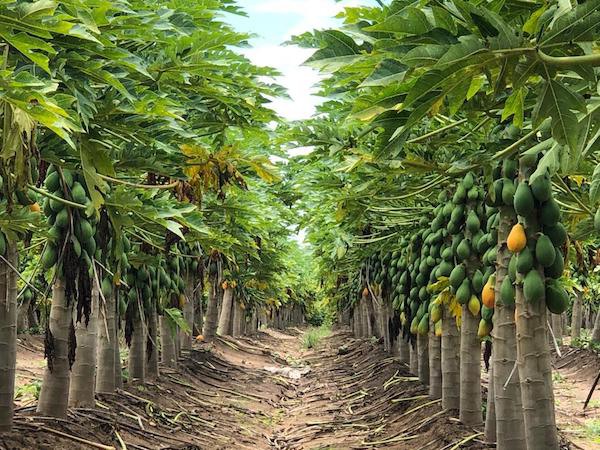Brazil produces papayas year-round, though the volumes produced fluctuate throughout the year and the peak volumes arrive between August and October. Currently, the production volumes are at a medium level.

The fluctuation of papaya volumes throughout the year is detailed in the chart above.
In the months from July through November, the Formosa papaya has the best quality. For the Golden papaya, the top quality comes from March through July. “During these months, the production areas are less affected by rain or high humidity, so the quality of the papayas is at its peak,” Fred Tavares of UGBP shares.

Medium supplies but high demand
The demand for Brazilian papayas is high at the moment. “A lot of customers are looking for the papayas and are looking to buy them. Papayas are a superfood and the overall sales that we have seen throughout the pandemic have ranged from similar to better than before,” says Tavares.
Brazil has two main production regions: Linhares, located in Espirito Santo, and Baraúna, in Rio Grande do Norte. “Baraúna mostly produces the Formosa papaya variety, and in Linhares they produce the Golden variety. Having two production regions is very efficient because if the weather prevents us from harvesting one week, then we can still rely on the other region. That is what happened earlier this month – we had rain in Linhares, but we were able to continue harvesting in Baraúna,” says Tavares.

The demand for the two varieties depends on the country, Tavares explains. “In the UK, for example, the Golden variety is the most popular. In Germany, though, they look mostly for the Formosa papaya. For the Formosa papaya there is a lot of competition – in Europe, the supplies of Formosa papayas from the Canary Islands compete with Brazil for the market in Spain, and in the US, there is a lot of competition with Mexico and Guatemala, who supply mostly the Maradol and Formosa varieties.”

Logistical challenges due to pandemic
While the papayas are transported both by ocean and air, airfreight is preferred for this fruit. “At the start of the pandemic, there were barely any flights available and airspace was very expensive,” says Tavares. “Fortunately, the rates are now starting to normalize – they aren’t normal yet, but are starting to become much better,” he concludes.

 For more information:
For more information:
Fred Tavares
UGBP - Crown Global Corp.
Tel: +1 305 365 7811 | Fax: +1 305 365 7688
Email: [email protected]
www.ugbp.com










